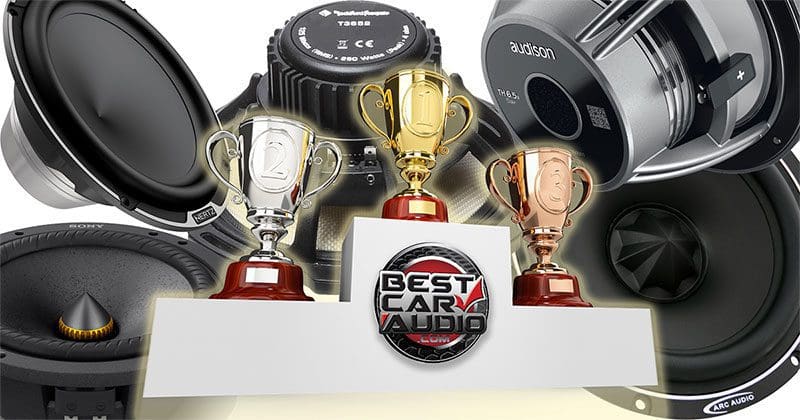When upgrading your car stereo, speakers are the only link between your electronics and your ears. Unfortunately, low-quality speakers connected to the best amplifiers and source units in the world will still sound mediocre at best. In this article, we’ll take a look at the classes of speakers available for your car or truck. In addition, we’ll provide some tips to help you expedite the process of working with the Product Specialist at your local retailer to end up with the best value and performance for your investment.
Start by Determining Speaker Sizes
The first thing that needs to be determined is the size of the speaker you’re hoping to upgrade in your car or truck. In the car audio industry, the most common speaker sizes are 6.5-inch and 6×9. With that said, there are 3.5-, 4-, 5.25-, 6-, 6.5-, 6.75- and 8-inch round speakers, along with 4×6, 4×10, 5×7, 6×8, 6×9 and 7×10 oval speakers. The Product Specialist you’re working with will likely know what size speaker is in your vehicle or they’ll remove a trim panel to check.
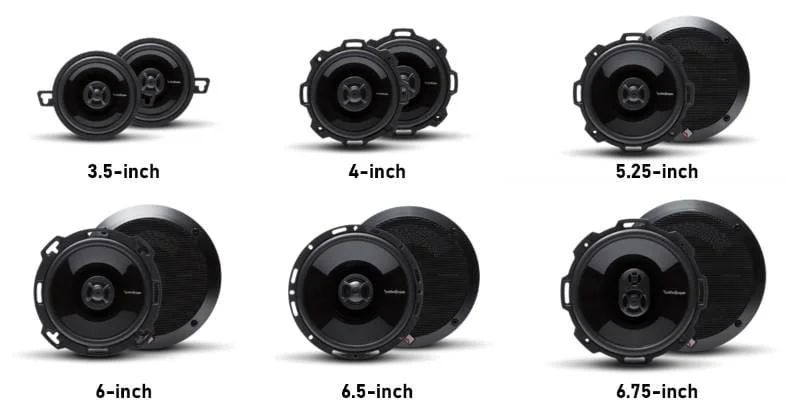
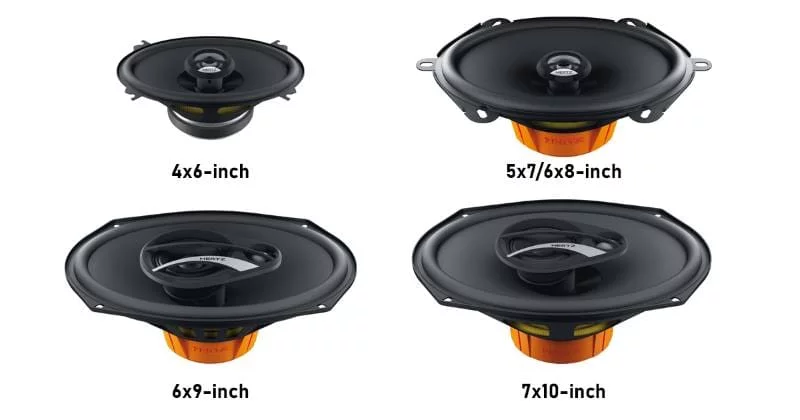
Once you know the speaker size, the next step in terms of physical requirements is to consider your vehicle’s mounting depth and protrusion limits. The mounting depth refers to how much space is available behind the speaker mounting surface for the speaker basket and motor (magnet) assembly. The limiting factor for door speakers is usually the distance to the window when the lower edge is behind the bottom of the speaker. For dash speakers, the limitation is often venting from the climate control system. For rear parcel shelf speakers, torsion-type springs that hold the trunk lid open are the primary concern.
The second consideration is the amount of space available in front of the speaker. If the installation will use the grille included with the speaker, then this isn’t a problem. However, if the speaker will be installed behind the grille that came with the car, then adequate space must be provided for the tweeter, and the woofer at its maximum forward excursion limit.
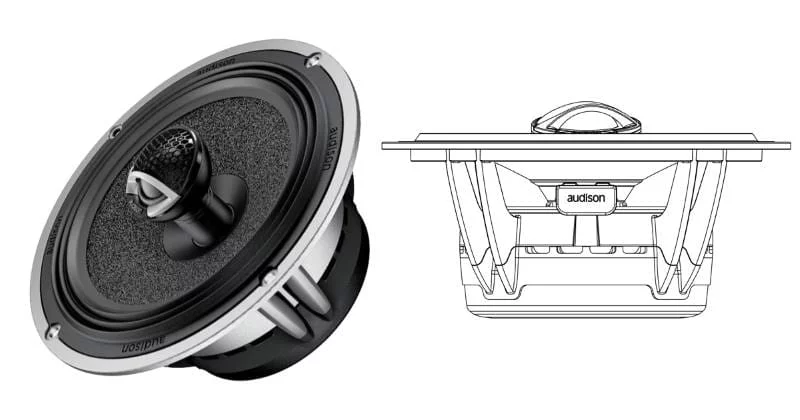
If there’s room, the technician working on your vehicle may choose to build a spacer out of plastic or a composite to move a deeper speaker outwards. It’s worth repeating (as we have many times) that wood spacers don’t last very long in a car or truck door. They will get wet when it rains, and even when painted, coated in fiberglass resin or sprayed with an undercoating, they will eventually swell and become moldy. This deformation is rarely even and can damage or break high-quality cast-basket speakers. Materials like cast acrylic, ABS, high-density polyethylene and expanded PVC are good options for spacers. Most reputable shops will have these materials in stock and will cut custom spacers for your application. We’ve even seen spacers constructed from composite kitchen countertop materials like DuPont Corian. Companies like Metra offer vehicle-specific speaker spacers and mounting adapters to allow for reliable installations that don’t require any fabrication skills.
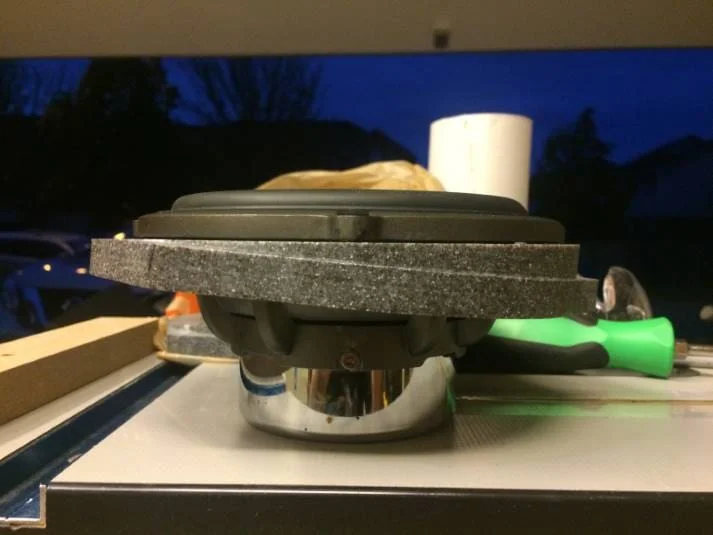
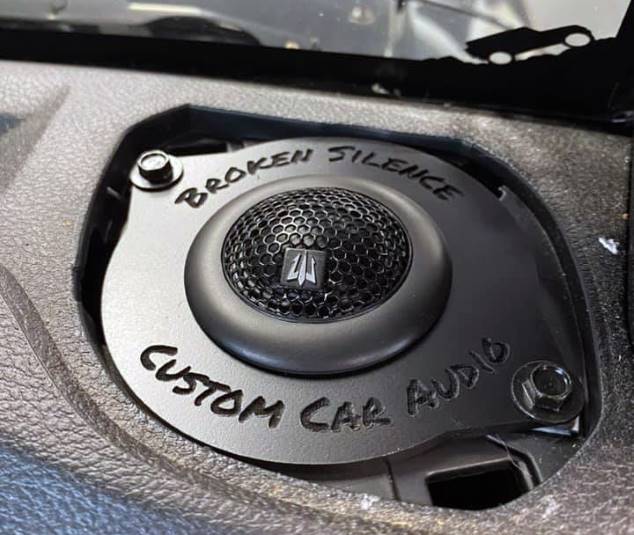
Speaker Design
Once you’ve determined the size of speaker that’s suitable for your application, you’ll need to decide on your goals for the audio system. We aren’t quite at the stage where we’ll talk about performance and quality, though. This step involves deciding if you are going to want a coaxial speaker or a component set.
In a coaxial speaker, the tweeter, or a tweeter and super-tweeter are integrated into a single chassis along with the woofer. The benefit of these systems is that they are typically an all-in-one speaker solution. However, if you’re replacing the front speakers in a vehicle, you may want to consider using a component speaker set. In most cases, a two-way component speaker set includes a pair of woofers and tweeters. The woofers would be mounted in the door location, and the tweeters would go in the dash location, in the A-pillars, up high in the doors or in the sail panels. The benefit of a component set is that the higher mounting position of the tweeters may afford better high-frequency delivery, and the source of the sound in the vehicle may be at the dash or windshield level instead of down near your legs.
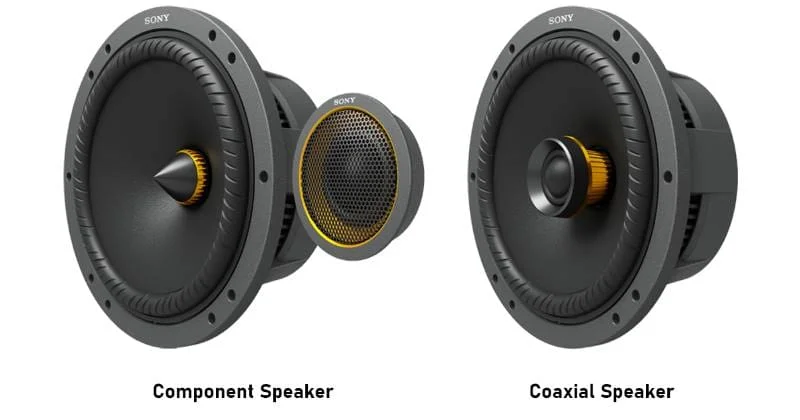
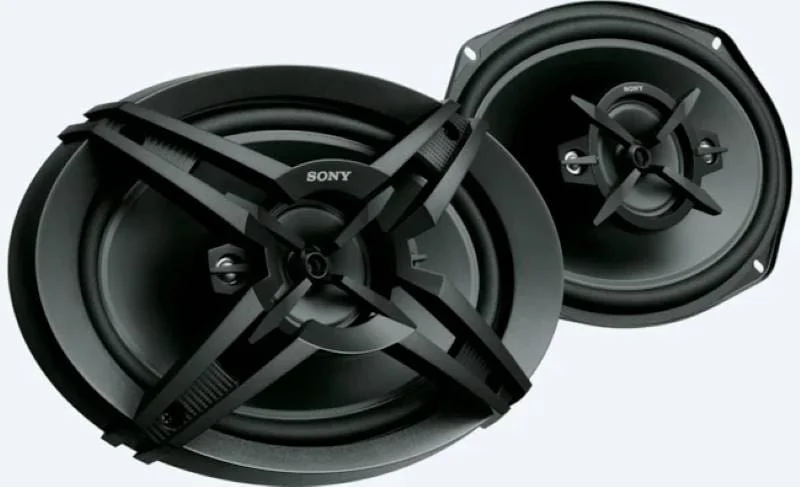
In the case of component speakers, most include an external passive crossover network. This compact circuit includes capacitors, inductors and often resistors that divide the audio signal from a radio or amplifier into different frequency bands and send the bass and midrange information to the woofer and high-frequency information tweeter.
Component speaker sets are also available as a three-way solution for cars that use a woofer, a midrange driver and a tweeter. In most cases, the mid and tweeter are mounted higher in the door or in the dash to help raise the sound source.
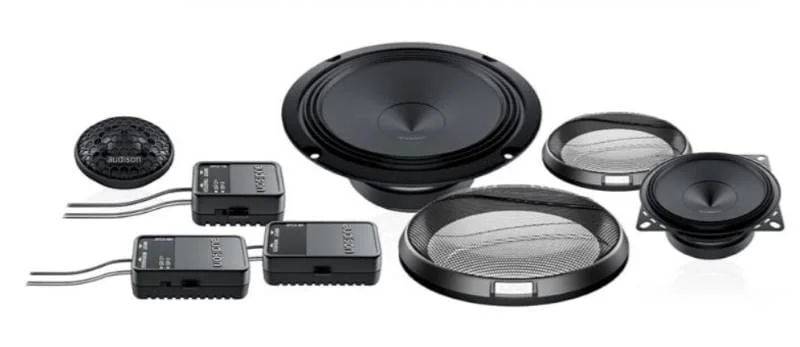
Suppose you’re seeking the best possible performance from your audio system. In that case, a three-way speaker set that’s installed in combination with six channels of amplification and a digital signal processor is the way to go. We won’t get into DSP applications in this article as we’ve covered it many times already.
If you’re going the DSP route, many companies sell their mid- to high-performance drivers in pairs. The Product Specialist can help you chose a woofer size, an appropriate midrange solution and tweeters to create a bespoke configuration for your vehicle’s speaker locations.
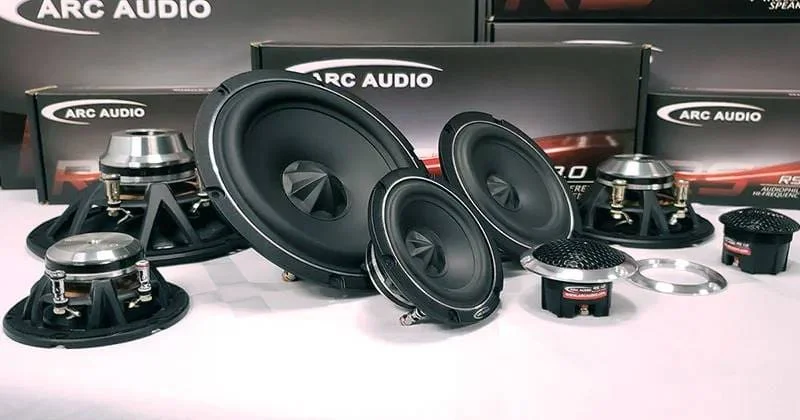
Speaker Selection Considerations
Now we get to the part where you decide what level of performance you want from your audio system. Do you need an inexpensive speaker to replace one that came from the factory that’s worn out, or are you trying to upgrade the audio system to deliver clearer, more detailed sound? Part of this consideration includes deciding how much power you have available and your preferred listening level.
For example, suppose you want to recreate the Kiss concert in Ottawa, Ontario, from back in the 1970s. The show reached an output level of 136 decibels. In that case, you need speakers that can handle a lot of power, have significant woofer cone excursion capabilities and include features that will help to ensure they sound good when played loudly.
A quick aside here: Speakers are much more complicated than most people think. For every speaker, as it plays louder, more distortion is added to the output signal due to mechanical and electrical non-linearities, along with cone, dust cap and surround resonances. If you want a speaker that will be clear when played loudly, then choosing something with technologies like a copper or aluminum shorting ring and a copper cap will help. The diameter and length of the voice coil play a prominent role in determining peak power handling. Some 6.5-inch mid-woofers have 2-inch diameter voice coils. Likewise, the suspension should use a flat, progressive spider, and the cone, cap and surround should be designed to eliminate resonance. It’s a complicated balancing act to get this perfect.
Let’s back up here. If you want your music loud, then you’ll need to consider the speaker power handling specifications. If they’re compliant with the ANSI/CTA-2031 standard, those numbers will tell you how much heat energy the speakers can dissipate before they are damaged. Power ratings do NOT define the quality of a speaker. There are terrible-sounding speakers with high power ratings and some that sound quite good with low ratings. Car audio enthusiasts need to stop buying speakers based on power ratings.
Auditioning Speakers Helps Determine Quality
Most car stereo shops have display boards that can be used to audition speakers. Here are a few quick tips. First, when switching from one speaker set to another, try to make the listening level equal. Even slightly louder speakers will sound better because you can hear the quieter parts more clearly. Second, bring one or two songs you know pretty well to the store to listen to the speakers. A dynamic track with a wide frequency range will tell you a lot about the dynamic and damping characteristics of a speaker. A song with clear male and female vocals will tell you a great deal about the clarity and accuracy of the drivers. Lastly, listen to them for a short time at high volume levels. If they sound stressed, they are likely missing distortion-reducing technologies.
When shopping, your goal is to find the speakers that sound the most accurate for a given price point. For a 6.5-inch speaker set, you can pay anywhere from about $55 for an introductory-level two-way coaxial speaker to well over $5,500 for a premium two-way component set. The power handling, output capability, frequency response and, most importantly, the speakers’ clarity increase as you move up the price range. Better speakers reproduce audio signals more accurately, recreating the original sound from the recording studio in your vehicle without adding unwanted emphasis, leaving anything out or adding distortion.
Upgrade Your Speaker Upgrade
You can improve the performance of your audio system significantly by having sound deadening installed in the doors of your car or truck. High-quality deadening products reduce the transfer of noise energy into your vehicle and make it easier to hear the quieter parts of your music.
If you have a vehicle with large openings in the door, sealing those with fiberglass or plastic and then covering the area with deadening can dramatically improve a door speaker’s bass and midbass performance. We’ve seen gains in output of 10 dB from the addition of sound deadening alone.
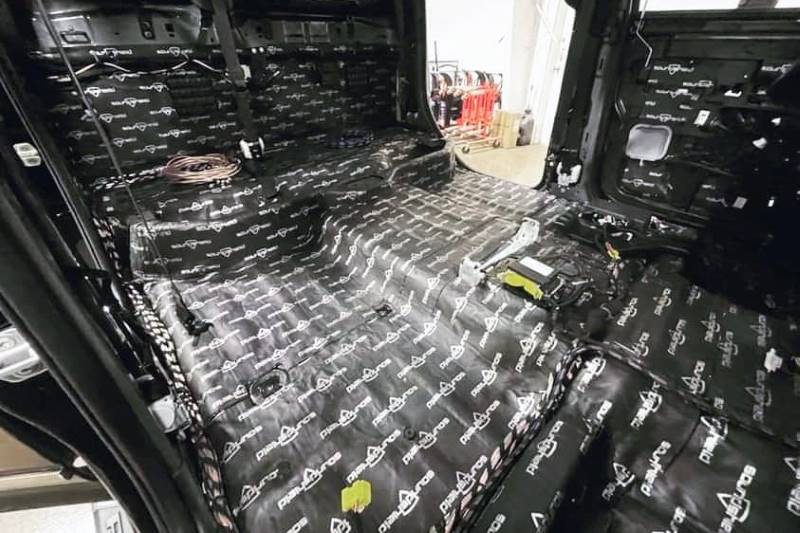
Another upgrade that can help with the performance of your speakers is to have your installer add a set of rubber or foam gasket rings around the drivers. These rings help to seal the gap between the door and the speaker to prevent sound from bouncing around and potentially causing cancellation.
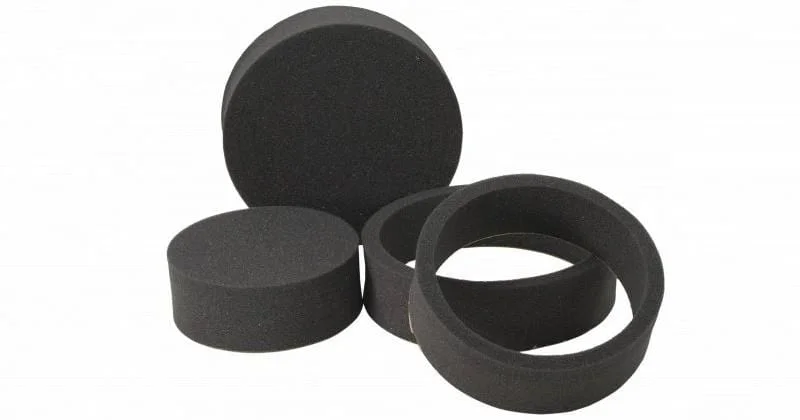
The Best Way To Improve Your Door Speakers
Finally, if you’re after the best performance possible from a set of door speakers, the best upgrade you can make is to add a subwoofer system to your vehicle. Relieving the speakers’ need to reproduce bass frequencies below 80 hertz can significantly cut the power sent to the speakers. Just as we mentioned earlier, the speakers won’t need to work as hard and consequently will add less distortion to the audio signal. The result will be a system that can be played at higher volume levels with less distortion. That’s a win-win!
When it’s time to replace or upgrade the speakers in your car or truck, drop by a local specialty mobile enhancement retailer and audition the options available for your vehicle. Always remember, when it comes to sound quality and accuracy, the speakers in your vehicle are your most critical consideration.
